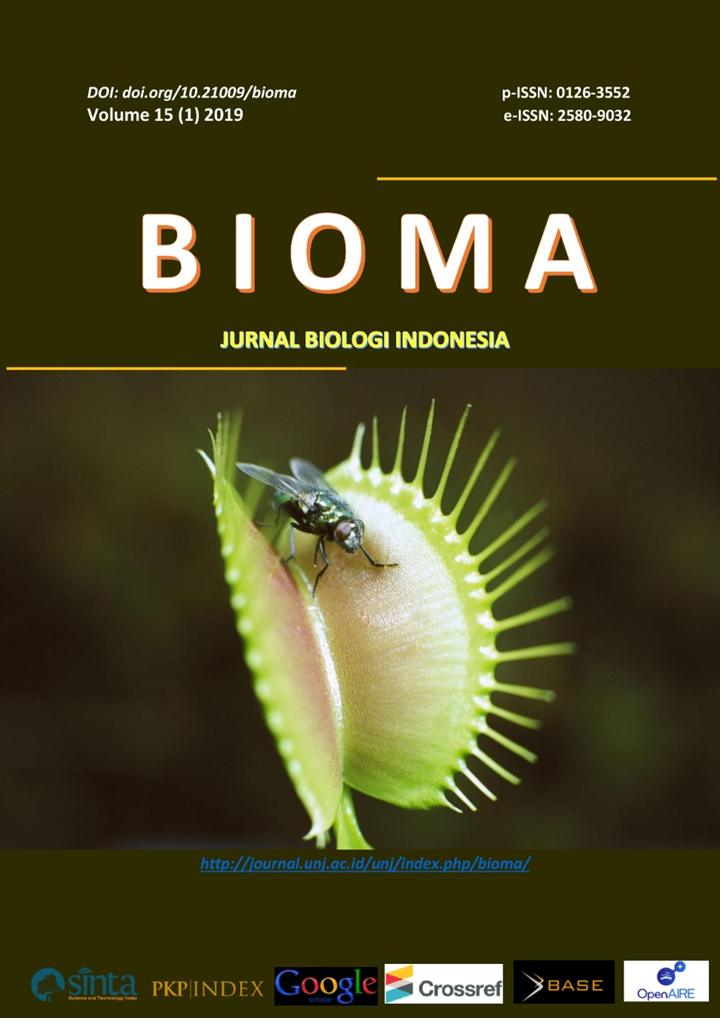ISOLASI DAN SELEKSI KHAMIR AMILOLITIK ASAL BUAH NANGKA (Artocarpus heterophyllus Lam.)
DOI:
https://doi.org/10.21009/Bioma13(1).5Abstract
The aim of this research is to find the isolates of yeast that have the ability to produce enzyme amylase. The strains that can produce the amylase enzyme are characterized by a clear zone around colonies after addition of iodine solution in medium containing 1% starch soluble. Activity of amylase enzyme can be determined by measuring using spectrophotometer at λ 540 nm. The isolation result obtained 75 representative yeast isolates with colony color white butyrous 16%, white mucoid 29.3%, yellowish white 18.7%, cream 20%, peach mucoid 9.3%, and orange mucoid 6,7%. Screening results showed that 8 isolates were able to produce an amylase enzyme with code isolates K33, K34, K36, K37, K48, K107, and K128. A total of two potential yeast isolates in yielding amylase with K34 and K39 isolate codes had amylolytic index 2.89 and 2.27. The highest enzyme activity was produced by K48 (0.88 U/mL).


